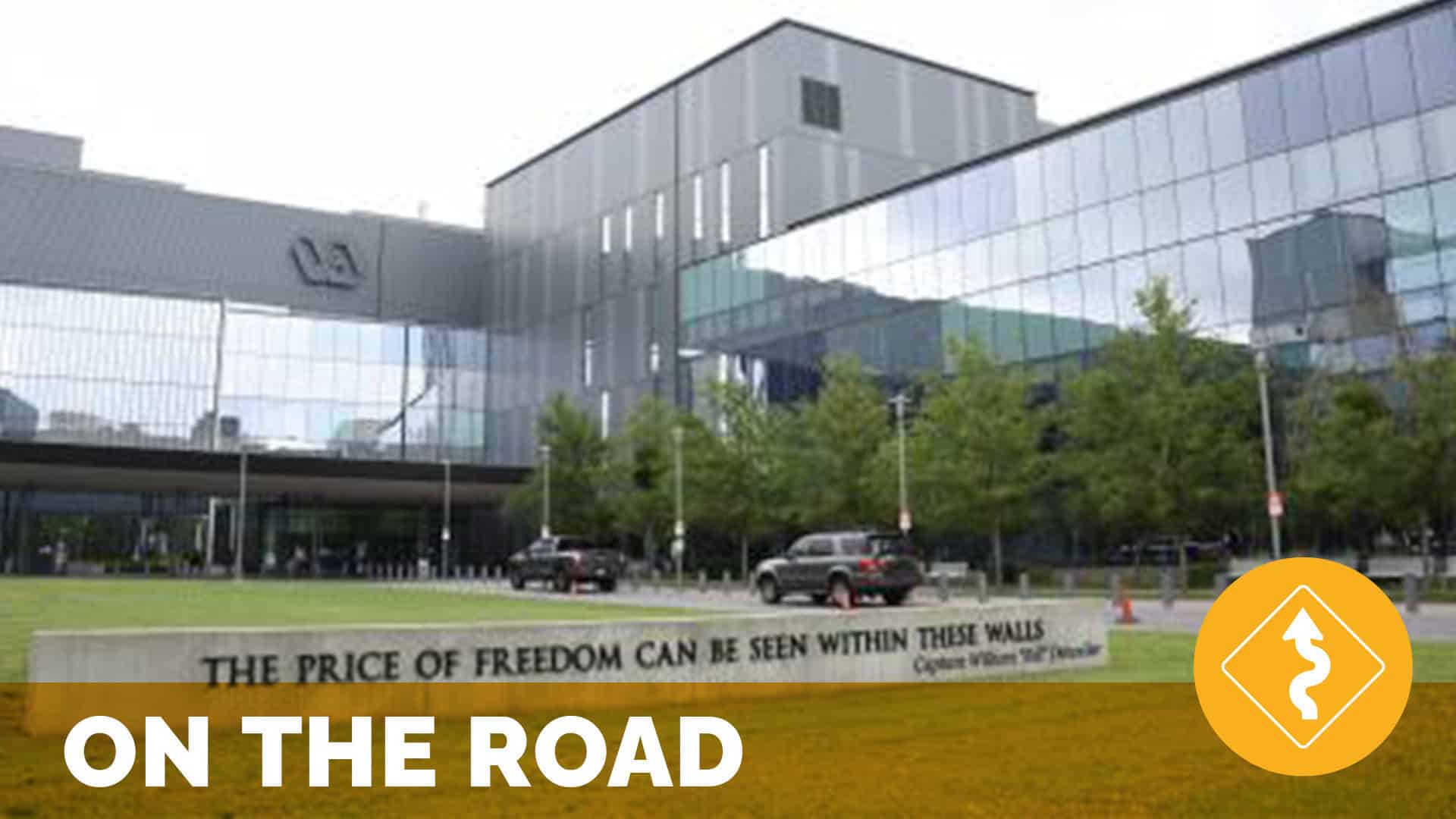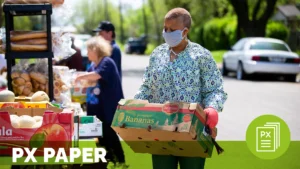Building a Legacy to Honor the Service and Sacrifices of U.S. Veterans

On the Road with Southeast Louisiana Veteran’s Healthcare System – November 2015
by Stacy Palmer
Our latest On the Road took me to the spirited city of New Orleans where the Southeast Louisiana Veteran’s Health Care System has recovered from the devastation of Hurricane Katrina over 10 years ago with amazing determination and an unwavering commitment to deliver person-centered care to Veterans.
Jan LemaireI had the pleasure to spend an afternoon with Jan Lemaire, the system’s Patient-Centered Care Coordinator and one of over 350 active members of The Beryl Institute from the Veteran Affair’s Office of Patient Centered Care and Cultural Transformation. A Veteran herself, Lemaire has an impressive background in healthcare and education and a true passion for innovation and ensuring patients are at the center of the overall care experience. In her words, “We exist for the patient. The patient does not exist for us.”
Lemaire’s leadership in this area has helped an organization in transition flourish and be recognized as one of the most engaged VA patient-centered care facilities. That’s not an easy feat for a hospital in a city torn apart by natural disaster just a short time ago. In fact, after Hurricane Katrina, there was truly nothing left of the New Orleans VA Medical Center. During the worst of the storm and flooding, the hospital was full of patients. Food supplies quickly diminished, power was lost, toilets were backed up and temperatures reached 105°. Even amidst these horrific conditions, staff worked tirelessly to continue treating patients and bring them to safety. US Marine Corps helicopters arrived to bring supplies and rescue patients and staff as possible. The last person to leave the building after that draining and terrifying experience was John Church, the hospital’s Director at the time. Church also ensured all staff members were paid for the time they normally would have worked during the disaster to help as each dealt with their own personal losses and uncertainty.
The emotional toll on all staff was extreme, especially for those on duty during the disaster. Some are still unable to talk about the experience, but for many it created an undeniable bond and reaffirmed the purpose and scope of their work.
After Hurricane Katrina, VA re-established services in New Orleans within 100 days, returned over 800 staff to permanent assignments and assisted with relocating over 800 employees throughout the nation.
An Interim Solution for Care
The old inpatient medical center was no longer usable, so the VA began redesigning coordination of care for Veterans throughout the region to meet interim needs. The New Orleans VA Medical Center reorganized as a system of outpatient clinics and was renamed Southeast Louisiana Veterans Health Care System (SLVHCS), eventually offering primary and mental healthcare in eight community-based outpatient clinics, two dental clinics and multiple other specialty clinics. The VA made a commitment to provide primary care closer to home so that no Veteran would need to drive more than 30 minutes to access clinics.
Throughout the transition, the team has maintained a focus on patient-centered care and remembering to always consider the patient’s position. “We look at our space, processes and policies and ask ‘does this make sense?” explained Lemaire. “If not, we better rethink the experience.”
Veteran feedback is highly encouraged, as the leadership team believes patients need a venue to provide comments and suggestions and that information should be listened to and acted upon. Ensuring this happens is the responsibility of Robert (Bob) Manness, Customer Service Coordinator, and his team that includes patient experience officers in each clinic. The system uses a morning report session where they share feedback and compliments with various leadership members as well as managers located at each clinic to ensure feedback is shared at all levels.
“Central to the philosophy of the VA is the belief that staff should have the opportunity to see what patients are saying,” said Manness. From June through October 2015 alone they collected and shared over 1,700 pieces of feedback.
Fernando Rivera, Medical Center DirectorThis transparency and access is driven and exemplified from the top. Fernando Rivera, Medical Center Director, offers 24/7 access. Veterans have his phone number and can (and do) reach out to him at any time. Rivera is known through the system for modeling the leadership he hopes others will embrace. He regularly stops and talks to patients and shares an expectation with staff that no matter what they’re doing they should address the patient in front of them at all times.
The team understands patient-centered care is a cultural change but also acknowledges their efforts are laying a foundation for the organization. They are demonstrating how to care and are reinforcing a focus on interactive experiences tailored to each area. For example, based on patient feedback they realized they were not doing enough to support successful interactions for clerks, so they implemented a standardized scripting process. Clerks now better engage patients by consistently summarizing their visit, reinforcing future appointments and asking if there is anything else they can offer before they leave the office.
Manness shared other examples of how the simplest adaptations can make significant differences. For example, staff members checking in patients are now encouraged to make a notation about that patient so the nurse calling them back for their appointment can speak directly to them in the waiting room versus simply opening the door and shouting a name.
“It’s about creating welcoming environments for our Veterans and it also has an energizing effect on staff,” shared Lemaire as he told the story of a minor renovation in the New Orleans clinic’s pharmacy that had a tremendous impact. It was brought to leadership’s attention that the pharmacy had become run-down yet Veterans often spent significant time there waiting for prescriptions. Even with the pending move to the new facility Rivera believed it was important to invest in improving the environment for the short time remaining. The walls were painted and new floors installed – subtle changes yet they made a statement about the organization’s commitment to providing appropriate environments for patients. An unexpected result was an energizing of staff resulting in a 25% reduction in wait time for prescriptions.
This focus on patient-centeredness is clearly seen throughout SLVHCS from the organization’s patient-centered care retreats to New Orleans VA Police Chief Robert W. Kenyon’s expectation that even off-duty officers working in the hospital’s parking lot will smile and treat all patients as individuals.
Patient-Centered Care in Action
I had the opportunity to visit the New Orleans Community Based Outpatient Clinic and was struck by the measures the organization has taken to address patient experience throughout the facility, even with the knowledge from the start that it would be a temporary solution.
The clinic is located in a former nursing home transformed after Katrina. It offers ease of way finding with color coded hallways and signage and former resident rooms have been reconfigured with privacy in mind to encompass nursing pods, treatment areas and waiting lounges.
Lemaire pointed out benches added in front of the elevator bays in the clinic and parking garage – an idea suggested by employees to provide comfort for disabled patients while waiting. Volunteers staff information booths throughout the building and posters throughout reinforce the staff’s commitment to a culture of ownership illustrating the key components of that promise.
Culture of Ownership:
Commitment – Values, Vision and Mission
Engagement – Physically and emotionally fully present
Passion – Loving your work and letting it show
Initiative – Seeing what needs to be done and taking action
Stewardship – Effectively shepherding limited resources
Belonging – Being included, feeling included and including others
Fellowship – Being a friend and having friends at work
Pride – In your profession, your hospital, your work and yourself
As Lemaire articulated, these words describe the organization’s commitment to reorganize after the devastation of Katrina and now to rebuild the ideal environment to honor the service and sacrifices of Veterans.
Project Legacy
The clinics solved the immediate needs of SLVHCS patients, but the need for a permanent solution for Veteran care remained. VA received approval to build a new medical center that will open its doors to patients in early 2016 with all services offered by Q3 2017.
Project Legacy RenderingThe scope and significance of building a replacement medical center is captured by the project’s name. In a contest among employees resulting in over 85 suggested names, Project Legacy was determined to be the winning entry because it reflects the idea that the new medical center will be a legacy to the Veterans in southeast Louisiana and the Gulf Coast region – a legacy they deserve because of the service and sacrifices they’ve made to and for this country.
Reinforcing SLVHCS’ commitment to incorporating patient feedback, Project Legacy was designed with significant input by veterans through focus groups and patient advisory councils. It was based on recommendations from these groups that the building was designed with all units branching off of a main corridor for ease of access. Wheelchair-bound veterans tested the layout in mock-up patient rooms to ensure the overall experience met their needs.
Even paint colors for the new facility were voted on by the Veteran focus groups and patient advisory boards. Interestingly, of many potential pallets, the selected hues included the colors in the ribbons of honor received by many of the hospital’s heroes.
Lemaire acknowledged the importance of the Veteran feedback in all areas – even décor. She cited an example where the design team planned to incorporate bamboo into the landscaping until receiving feedback from Vietnam Veterans that the bamboo reminded them of a fear of enemies hiding with guns.
Challenges of Growth
Lemaire acknowledges the new facility will have a different tempo than the current organization as hours will increase to include evenings and weekends, making it necessary to significantly increase the staff size and creating different work environments than current staff may have initially signed on for. All together it is estimated 1,100 new staff will be brought on to make Project Legacy a reality.
I asked Lemaire how the organization would ensure new hires support a person-centered care approach and she assured they will be screened for this quality from the start. “Anyone in healthcare that does not understand patient-centered care is not going to be receptive about changing behavior,” she said. “If they can’t articulate that understanding in the interview, they probably don’t believe it.”
Throughout my visit I noted a consistent theme of the integration of quality, safety, value and experience. I also saw the passion and commitment of the VA leadership team to ensure all of these areas are addressed in providing the best possible care for Veterans. It’s been a long and emotional road for this team, but I believe they will have great pride in Project Legacy as a facility designed for and by Veterans and representing an incredible recovery from the devastation of Katrina. I look forward to returning soon to witness first-hand the impact Project Legacy will have on the community and staff.
Related content
-
 Patient Family & Community Engagement
Patient Family & Community EngagementExperiences of Psychosocial Support in Group Rehabilitation Interventions from Adults with Chronic Conditions – A Qualitative Systematic Review
Psychosocial support in group rehabilitation interventions can provide adequate social support and a basis for self-management. Both healthcare professionals and peers have invaluable roles in helping patients with chronic conditions adapt to their life situation. Interventions should facilitate knowledge sharing and help patients take responsibility for self-management. Furthermore, participants should be able to choose the
Learn more -
 Culture & Leadership | Environment & Hospitality | Infrastructure & Governance | Patient Family & Community Engagement | Policy & Measurement | Quality & Clinical Excellence | Staff & Provider Engagement
Culture & Leadership | Environment & Hospitality | Infrastructure & Governance | Patient Family & Community Engagement | Policy & Measurement | Quality & Clinical Excellence | Staff & Provider EngagementA Commitment to Human Experience in Essential Hospitals
A Commitment to Human Experience in Essential Hospitals highlights the innovative practices of essential hospitals in enhancing the human experience in healthcare. These safety-net hospitals are crucial for providing care to underserved and marginalized communities, addressing complex medical needs and significant socio-economic challenges. Despite facing financial constraints and staff shortages, essential hospitals excel in creating
Learn more -
 Culture & Leadership | Infrastructure & Governance
Culture & Leadership | Infrastructure & GovernancePhoneside Manners: Strategies for Effective Communication
As the first point of contact that a patient has with your office, what transpires after the phone’s first ring can set the tone for the entire patient experience and impact patient satisfaction. Phoneside manners occur before a patient even walks through your front doors and can determine the outcome, mindset, and overall satisfaction of
Learn more
